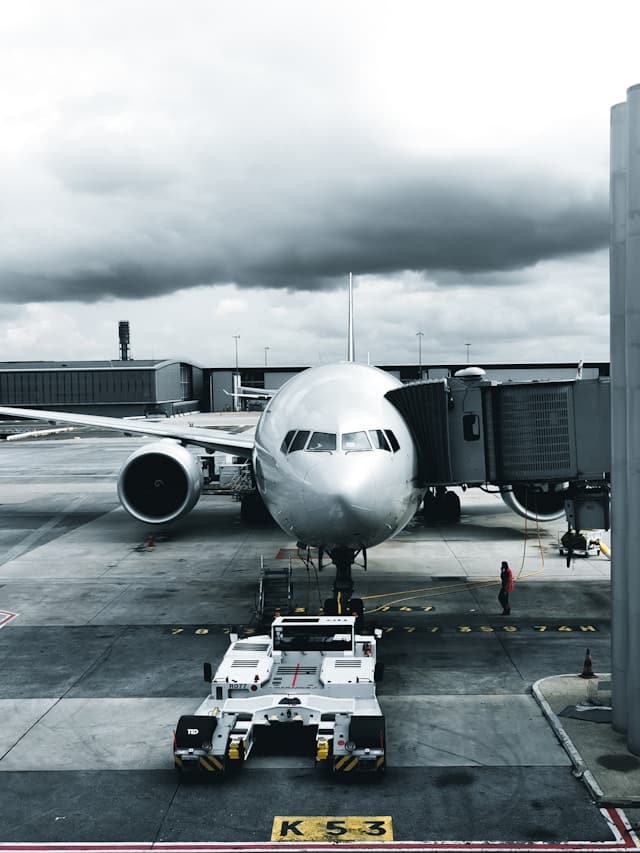From electric cars to drones, the transportation industry is increasingly turning to electricity as a means of propulsion. A new frontier in this movement is electric aircraft, a concept that could revolutionize the aviation industry. It’s an inspiring vision to think of a future where our skies are dominated by quiet, clean, and efficient electric planes. But what is the progress in electric aircraft propulsion, particularly for short-haul flights? This article delves into this exciting facet of technology, assessing its current state, potential challenges, and the influence it could have on the aviation industry.
The Advent of Electric Propulsion in Aviation
Until recently, the idea of electric aircraft was more akin to science fiction than practical reality. Traditional aircraft rely on fossil fuels for propulsion, generating a significant amount of greenhouse gas emissions. However, as the world grapples with the urgent need to reduce carbon emissions, the aviation industry is increasingly looking towards alternative propulsion methods. Electric power has emerged as a promising solution.
Also read : What Role Do Advanced Telematics Systems Play in Fleet Management Efficiency?
Aircraft propelled by electric energy rely on batteries or hybrid systems for power. Unlike conventional aircraft, these planes use electric motors to generate thrust, dramatically reducing emissions. Regional and commercial airlines are actively investing in short-haul electric aircraft, driven by ecological responsibility and potential cost savings.
The State of Electric Aircraft Technology
The progress of electric propulsion in aviation is defined by two key aspects: the development of battery technology and the design of electric aircraft. Let’s explore these facets in more detail.
Topic to read : How Is Edge Computing Transforming the Processing Capabilities of Mobile Devices?
Battery Technology
Battery technology is a critical determinant of electric aircraft’s feasibility. After all, the batteries must be powerful enough to sustain flight, light enough to maintain efficiency, and safe enough for commercial use.
Advancements in battery technology, such as lithium-ion and solid-state batteries, have improved energy density, making it possible to power aircraft for short-haul flights. However, sustaining long-haul flights remains a challenge due to current battery weight and power limitations.
Aircraft Design
In parallel with battery advancements, aircraft design also plays a critical role in the feasibility of electric aviation. Design engineers are exploring aerodynamic improvements, lighter materials, and more efficient propulsion systems to maximize the potential of electric power.
Innovative designs, such as distributed propulsion, have opened up new possibilities for aircraft efficiency. This involves spreading propulsion units across the aircraft, rather than focusing them in one or two engines. This design can reduce drag and enhance lift, further improving the efficiency of electric aircraft.
The Impact of Electric Propulsion on the Aviation Industry
The advent of electric propulsion promises significant implications for the aviation industry. If realized, the potential benefits are considerable, from reducing operating costs to improving environmental sustainability.
The rising fuel costs and growing concerns about climate change are pushing the industry to explore more energy-efficient, environmentally friendly alternatives. Electric aircraft could significantly lower fuel costs, which are a significant component of operational expenses for airlines. The reduction of greenhouse gas emissions also aligns with the global push towards a more sustainable future.
Moreover, electric propulsion could potentially redefine the regional market. Short-haul electric planes could make air travel more accessible and affordable, opening up new opportunities for regional airlines.
The Challenges Ahead for Electric Propulsion
Despite the promising progress, electric propulsion in aviation faces several challenges. The primary hurdle is the energy density of batteries. Although advancements have been made, batteries still cannot match the energy density of jet fuel. This limitation restricts the range and payload capacity of electric aircraft, particularly for long-haul flights.
Safety is another paramount concern. While electric propulsion systems have demonstrated reliability, stringent safety standards must be met before commercial deployment. Rigorous testing is needed to ensure the safety of these systems under various flight conditions.
Furthermore, the adoption of electric aircraft will require significant changes in infrastructure, such as charging stations at airports. The transition to a new form of propulsion will undoubtedly be a massive undertaking that will require cooperation from all stakeholders in the industry.
The Future of Electric Propulsion in Short-Haul Flights
Despite these challenges, the future of electric propulsion in short-haul flights appears promising. With the ongoing advancements in battery technology and aircraft design, coupled with the growing urgency to reduce carbon emissions, the momentum towards electric aviation is unlikely to wane.
As the technology matures, we can anticipate more short-haul routes being serviced by electric or hybrid aircraft. These planes could offer a cleaner, quieter, and more efficient mode of air travel. While long-haul electric flights may still be some way off, the progress in short haul flights is a positive step towards a more sustainable future.
The journey towards a fully electric aviation industry is a challenging one. However, as the world continues to push for cleaner, more efficient modes of transportation, electric aircraft will inevitably play a critical role in shaping the future of aviation.
The Role of Major Aviation and Technology Companies in Electric Propulsion
Many major aviation and technology companies are actively investing in electric propulsion. Rolls Royce and Wright Electric are among the front-runners in this field.
Rolls Royce has been developing electric technology to power aircraft for several years. They’re focusing on hybrid electric systems that combine traditional engines with electric motors to create cleaner, more efficient propulsion. This has the potential to significantly decrease the carbon footprint of air travel.
Wright Electric, on the other hand, is developing a fully electric plane that is specifically designed for short-haul flights. The company’s goal is to make electric flight a reality within the next decade, and it recently unveiled plans for a 186-seat electric plane that could cover distances of around 800 miles.
While these companies lead the charge, several other firms, including Airbus and Boeing, are also researching and developing electric and hybrid electric technologies for aircraft. Each company brings a unique perspective and set of skills to the table, which is accelerating the advancement of electric propulsion in aviation.
Public Perception and Acceptance of Electric Aircraft
Another critical aspect in the progress of electric aircraft propulsion is public perception and acceptance. Air travel safety is a paramount concern for passengers, and therefore, any new technology in the aviation industry must gain the trust of the public.
To date, electric aviation has had a good safety record. Electric motors are simpler and have fewer moving parts than traditional jet engines, reducing the risk of mechanical failure. And while battery safety is a concern, advances in energy storage technologies and rigorous safety testing should help alleviate these worries.
Moreover, electric planes promise a quieter, more peaceful flight experience, which could make air travel more appealing to passengers. A survey conducted by the University of Bath in the UK found that people are willing to fly less to reduce their carbon footprint. Electric aircraft, with their zero direct emissions, could provide an attractive alternative.
Final Thoughts: The Future of Electric Aircraft Propulsion for Short-Haul Flights
The progress in electric aircraft propulsion for short-haul flights signals a significant shift in the aviation industry. As the demand for cleaner, more efficient modes of transportation increases, electric and hybrid electric aircraft are set to play a crucial role.
Major aviation and technology companies are making significant strides in electric propulsion technology, designing more efficient propulsion systems and improving battery energy density. These advancements, coupled with a growing public acceptance of electric planes, are making electric air travel a likely reality in the not-too-distant future.
However, challenges still exist. The aviation industry needs to address issues like battery energy density and safety, and significant infrastructure changes will be required to support a fleet of electric aircraft. Nevertheless, the benefits of electric aviation — from reduced greenhouse gas emissions to lower operational costs — make it worth the effort.
Ultimately, the future of electric propulsion in short-haul flights looks promising. The journey towards a fully electric aviation industry is challenging, but with continued innovation and commitment, we can look forward to a future with cleaner, quieter, and more efficient air mobility.






